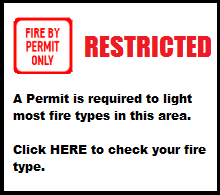History 1971-2000
Page 1
History 1971 – 2000 is taken from the Porirua Fire Brigade 50th Jubilee Publication. Published in October 2000
The biggest change after 1971 was close at hand. In April 1972, the Brigade paid staff agreed to settle for a 42 hour roster system. This meant that considerably more staff were required and with the increase in numbers came a need for increase in Station facilities.
The bedroom wing was doubled in size, and while this was going on the dining room was used as a dormitory. The Porirua manning settled at two Officers and seven Firefighters for each of the four watches, and with a Chief Fire Officer, Deputy Fire Officer, Third Officer and Fire Safety Officer, this completed the Porirua paid staff.
 October 14th 1972
The pride of the Porirua Fire Station, and the first of its type in the Wellington area, the new £25,500 International machine outside the station.
Standing alongside the machine is Porirua’s Chief Fire Officer Mr. GW Bicknell.
Manufactured by the International Harvester Company in Auckland, the new appliance carries a three phase pumping system adapted for New Zealand requirements from an American design prepared to meet the problem of high rise buildings.
The pumping system capable of delivering 100 gallons a minute, is considered the ultimate in fire fighting equipment. From delivery hoses the machine can pour on up to 750 gallons of water a minute. Built on a Australian chassis, the machine is powered by a 236bhp motor and has an automatic transmission expected to make the vehicle particularly suitable in high density traffic.
October 14th 1972
The pride of the Porirua Fire Station, and the first of its type in the Wellington area, the new £25,500 International machine outside the station.
Standing alongside the machine is Porirua’s Chief Fire Officer Mr. GW Bicknell.
Manufactured by the International Harvester Company in Auckland, the new appliance carries a three phase pumping system adapted for New Zealand requirements from an American design prepared to meet the problem of high rise buildings.
The pumping system capable of delivering 100 gallons a minute, is considered the ultimate in fire fighting equipment. From delivery hoses the machine can pour on up to 750 gallons of water a minute. Built on a Australian chassis, the machine is powered by a 236bhp motor and has an automatic transmission expected to make the vehicle particularly suitable in high density traffic.
Fire Service Commission
In the early seventies there was further change in the air, as many brigades throughout New Zealand were unhappy at how the Fire Boards were performing and many felt that the time was right for a major overhaul of how things were to be done in the future.
Henry May, M.P. from the then Labour Government was no stranger to the Fire Brigades and fire fighters, and he led the charge for the major review that many demanded, and as a result the Fire Service Act 1975 became law, and the way that we had done things in the past, and the way for the future was changed forever.
These changes were subtle at first and in time major changes were made. For example, starting in 1974, all new permanent staff recruits had to pass through a phase one (Basic 1) training supposedly before commencing duty. There were also many mandatory courses in the next few years of ones career.
On the other hand we received numerous manuals detailing how things were to be done. To many people’s amazement this also included a multi page instruction, almost book size, on how to write a report.
The Fire Service Commission took overall control on the 1st April 1976 and the Fire Boards were relegated into history.
While the Porirua Fire Brigade functioned under its own Chief Fire Officer and station procedures, the Fire Service Commission set policy and guidelines.


 CHECK ITS ALRIGHT
CHECK ITS ALRIGHT